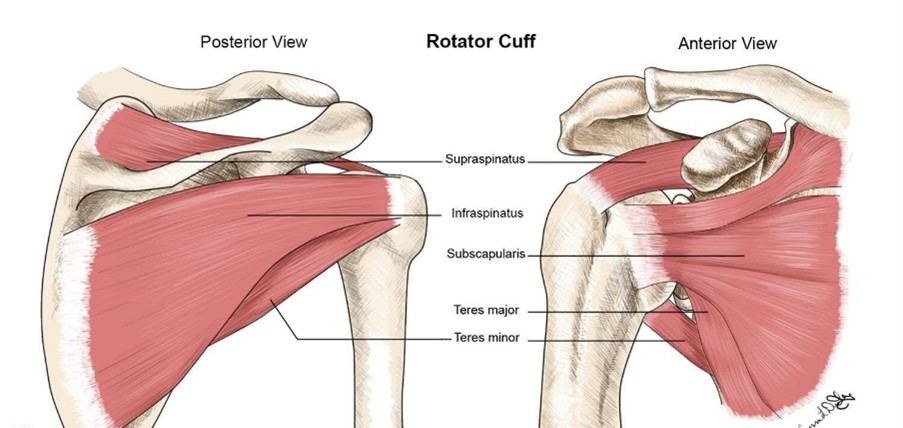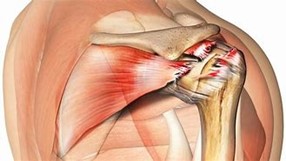What is the rotator cuff?

The rotator cuff consists of 4 muscles: the supraspinatus, infraspinatus, teres minor and subscapularis. They attach from your shoulder blade into your upper arm (humerus). They work to provide dynamic stability to the shoulder joint during movement and individually assist with a range of shoulder movements. They allow you to do a range of activities from reaching up to hang the washing up to swinging a golf club or tennis racket

A Rotator cuff tear is a term used to describe an injury where there is a tear in one or more of the muscles in the shoulder which stabilises the joint. Rotator cuff tears are extremely common and can occur at any age. In younger populations it typically occurs secondary to trauma however, more commonly it occurs atraumatically overtime to 35-65 year olds which are known as degenerative rotator cuff tears.
Risk factors for Rotator cuff tears
- Excessive tissue loading (overactivity)
- Acute trauma – Fall, dislocation etc
- Lifestyle factors – Lack of sleep, poor diet, smoking, poor nutrition, stress and anxiety
- Increasing Age
Signs and symptoms
- Shoulder pain
- Shoulder weakness
- Reduced functional activities
- Pain during sleep or when lying on shoulder
- Atrophy of the surrounding shoulder muscles
- Clicking/catching sensation
Diagnosis
- Assessment by a medical professional
- Imaging – MRI’s, ultrasound and other imaging can be incredibly useful especially in the event of trauma. Despite this, research shows that it is difficult to determine findings which are relevant to pain. For example, changes seen on scans to structures on symptomatic patients are commonly also seen in the pain free population.
What happens when the rotator cuff becomes dysfunctional?
Following damage to one or more of the rotator cuff tendons inflammations will cause pain and affect the strength and stability of the joint. This makes the cuff dysfunctional and affects its ability to assist in functional activities such as tasks requiring elevation or rotation of the arm.
How Can Physio help?
Research shows that physio and exercise therapy is the first line recommendation, goals are dependent on each individual, but this may include:
- Help you identify unfavourable lifestyle factors
- Graded Exercise programme working on mobility, strength and stability
- Advice and education
- Striking a balance between respecting the sensitivity of your shoulder and reconditioning your shoulder
- Manual therapy
- Looking at the kinetic chain (whole Body)
Other options
- Injection therapy – Can be useful in some cases but can be short term and so should be used in conjunction with exercise to optimise shoulder function.
- Surgery – In the absence of severe trauma symptoms which do not resolve following a conservative (non-surgical) approach after 3-6 months you may wish to consider surgery.
